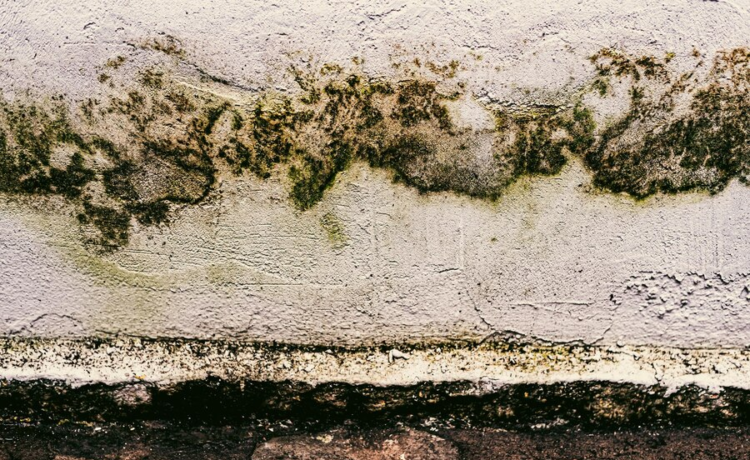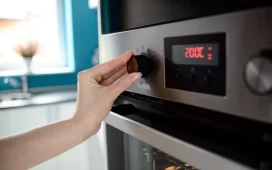Mold is often referred to as the “silent invader” for a reason. It can creep into your home unnoticed, thriving in dark, damp environments and spreading rapidly if left unchecked. More than just an unsightly nuisance, mold poses serious health risks, including respiratory problems, allergies, and other complications. Detecting mold early and treating it promptly is crucial to protecting both your home and your family’s health. In this blog post, we’ll explore how to recognize the signs of mold and what steps you can take to address it before it becomes a bigger problem.
How to Detect Mold Early
Recognizing mold in its early stages is the key to preventing its spread and minimizing damage. Here are some common signs to watch out for:
1. Visible Spots or Stains
Mold often appears as dark spots or stains on walls, ceilings, and floors. It can range in color from black and green to white or even pink. In bathrooms, basements, or other moisture-prone areas, these stains may look like small, fuzzy patches or streaks. Regularly inspecting these areas can help you catch mold before it spreads.
2. Musty Odor
A persistent musty or earthy smell is often one of the first indicators of mold growth. Even if you can’t see any visible signs of mold, an unusual odor may suggest that it is lurking behind walls, under carpets, or in other hidden areas. Pay attention to any changes in the smell of your home, especially in enclosed or poorly ventilated spaces.
3. Water Damage or Leaks
Mold needs moisture to grow, so any signs of water damage, such as peeling paint, warped walls, or bubbling wallpaper, could be a precursor to mold growth. Areas that have experienced leaks, flooding, or high humidity levels are especially susceptible. If you’ve recently had a water-related incident, be vigilant in monitoring for mold in those areas.
4. Condensation on Windows and Surfaces
Condensation on windows, walls, or other surfaces can create the perfect environment for mold to thrive. If you notice excessive condensation or dampness in your home, particularly in rooms with poor ventilation like bathrooms and kitchens, take steps to improve airflow and reduce moisture levels.
5. Allergy Symptoms or Health Issues
Mold can trigger a range of health problems, particularly in those with allergies, asthma, or compromised immune systems. Symptoms like sneezing, coughing, runny nose, itchy eyes, and skin rashes may indicate mold exposure. If you or your family members experience these symptoms more frequently while at home, consider having your property inspected for mold.
How to Treat Mold Early
If you’ve detected mold in your home, it’s essential to act quickly to prevent it from spreading further. Here’s how to treat mold early and effectively:
1. Identify and Eliminate the Source of Moisture
The first step in treating mold is to identify and eliminate the source of moisture that allowed it to grow in the first place. Fix any leaks in roofs, walls, or plumbing, and ensure that all areas of your home are properly ventilated. Dehumidifiers can help reduce humidity levels in damp areas like basements and bathrooms.
2. Remove Affected Materials
If mold has grown on porous materials such as drywall, carpeting, or ceiling tiles, these items will need to be removed and replaced. Mold can penetrate deep into these materials, making it difficult to clean effectively. Be sure to dispose of contaminated materials properly to prevent the mold spores from spreading to other areas of your home.
3. Clean and Disinfect Surfaces
For non-porous surfaces such as tiles, glass, or metal, mold can often be cleaned with household cleaning products or a mixture of water and detergent. Use a scrub brush to remove mold, then disinfect the area with a solution of water and bleach (1 cup of bleach per gallon of water). Always wear protective gear, such as gloves and a mask, when cleaning mold to avoid exposure to mold spores.
4. Improve Ventilation and Airflow
Proper ventilation is crucial in preventing mold growth. Ensure that bathrooms, kitchens, and other moisture-prone areas are equipped with exhaust fans or windows that can be opened to promote airflow. Consider using air purifiers with HEPA filters to capture airborne mold spores and improve indoor air quality.
5. Seek Professional Mold Remediation Services
While small mold problems can often be handled with DIY methods, larger infestations or mold that has spread to hidden areas may require professional intervention. Mold remediation specialists have the tools, expertise, and protective equipment needed to effectively remove mold, treat affected areas, and prevent future growth.
Conclusion
Mold may be a silent invader, but it doesn’t have to be a permanent one. By detecting mold early and taking swift action to treat it, you can protect your home and your family from its harmful effects. Regular inspections, proper ventilation, and immediate attention to water damage are all key steps in keeping your home mold-free. If you suspect mold in your home, don’t wait—take action today to ensure a healthy, safe living environment.







